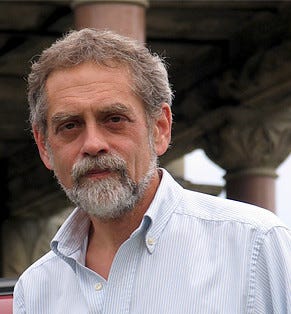Defining an energy IoT platform may be tricky, but the need for these bundles is unmistakable.
September 30, 2019

“Complexity” may be an arguable concept, but anyone who’s been through an energy IoT implementation probably has a deeper understanding of the word than most. With mechanical and digital hardware to consider, and software and legacy systems to harness, developing an effective IoT-based energy management system is not a task for the timid.
Whether a utility or other power generating institution is contemplating a brand-new energy infrastructure or needs to upgrade and enhance existing systems, there are literally scores of decisions to make on the road to implementation. And in today’s environment, with consumer expectations of uninterruptible and personally manageable energy services, there is definitely a sense of urgency among first-time deployers and upgraders alike.
With pressure being exerted from all sides — customers, competitors, regulators and possibly stakeholders — utilities and institutional power producers are looking for a fast on-ramp to an efficient yet cost-conscious IoT-based energy management system. Rising to meet those needs, most vendors that supply energy-related IoT products and services are bundling both into platform packages that can drastically reduce the time it takes to become operational, while helping to mitigate complexity of dealing with numerous component vendors.
[Smart Home Summit is the conference that focuses on interoperability, cybersecurity and the future of the smart home. Save $200 on your conference pass with VIP code “IOTWORLDTODAY.”]
“It’s great that multiple vendors can do multiple things,” said Mohamed Shishani, Schneider Electric’s EcoStruxure Power deployment leader, USA. “But the customer doesn’t want to deal with 10 or 15 vendors for their own type of version of an IoT platform.”
The Components of an Energy IoT Platform
A discussion of what comprises an energy IoT platform may border on the philosophical as both sellers and buyers of platform products or services are likely to have a variety of perspectives relative to their specific needs and current pain points. Of course, the vendor’s expertise and product portfolio play the biggest part in its platform definition. So while a hardware vendor may tilt its definition toward the physical infrastructure, a software provider is likely to see the hardware as a given and the software as the true platform.
A report published by IDC (IDC MarketScape: Worldwide Industrial IoT Platforms in Energy 2019 Vendor Assessment, June 2019) includes the research firm’s definition that lists the characteristics of an IoT energy platform. The detailed definition is software-centric, and calls for support for basic industrial IoT protocols such as the Open Platform Communications (OPC) Unified Architecture, advanced analytics, built-in security facilities and APIs that allow access to data, among other capabilities.
IBM’s Utilities Industry Leader Terry Saunders has a somewhat different outlook on an energy IoT platform with a greater focus on the customer’s requirements and goals.
“My perspective is one that helps to fuel the value proposition for utilities around asset reliability and availability,” said Saunders. His platform concept also goes beyond just hardware and software to embrace cloud-based resources. “We have a variety of on-ramps that help to support that and, obviously part of that with IoT is cloud services.”
Eduardo Estelles, chief executive officer and technical director of Glasgow, Scotland-based Logic Energy Ltd., suggests that a bespoke platform will likely provide the best fit. “I do not think there’s an off-the-shelf option,” wrote Estelles in an email. “In my experience always there’s some level of customization, otherwise you just have a data logger.”
How Vendors Are Responding to Platform Demand
The awareness that customers’ needs may define what a platform is has led many vendors in this market to retain a flexible approach that eschews cookie-cutter offerings in favor of more customized platform products.
Schneider’s Shishani describes three general layers that should be present to meet a customer’s requirements: smart hardware, interconnection with a supervisory layer (and edge control) and analytics that can plow through voluminous data to produce actionable information.
“I think when you have those three layers,” said Shishani, “you’re situated for a well-oiled machine from a standpoint of reliability, safety, availability, etc.”
IBM’s Saunders notes that exploiting a number of advanced technologies has enabled the company to expand its energy IoT offerings to better meet customers’ needs.
“We’re part of the Watson IoT platform,” said Saunders. “That exposes us to a great deal of research, cognitive services, machine learning — all of which gets exposed and embedded into our enterprise asset management and asset performance management solutions. So it’s really broadened the set of values for customers.”
Such developments that leverage AI, virtual and augmented reality and other state-of-the-art technologies may soon become essential elements of energy IoT platforms. The list of users’ concerns in the IDC report is long and complex, requiring new and creative approaches to such table stakes items as device management, data management and analytics, security and application development including DevOps disciplines, among other current and emerging requirements.
Extending the Platform
Regardless of the type of energy IoT platform under consideration, a key requirement will always be the platform’s integration capabilities. There are actually several points of integration that must be addressed, including internal integrations that enable a variety of management and accounting systems to accept and process IoT data.
There’s also a need for an IoT-based energy management system to act as a true platform in that it will allow internally developed and third-party applications to integrate as seamlessly as possible.
“If you’re a provider … the ability to integrate with any third-party software or any third-party hardware is key, so the openness of the platform is going to be super-critical,” said Shishani. “There needs to be convergence and that convergence is built on the fact that you’re able to integrate as a provider or able to be open within your platform for APIs.”
IBM also subscribes to an open-door policy in regards to extending their energy IoT platform. “We definitely are a platform in the sense that we are open,” said Saunders. “And even our predictive models of asset health and risk can be extended and built upon by the customer. That gives them competitive differentiation but also allows them to adapt more to the specific needs of the business.”
Open APIs and other forms of application integration are particularly important for analyzing the IoT-collected data, as many of the applications that can handle the data crunching effectively are external, such as SAP HANA and Oracle IoT SaaS applications.
In addition to the ability to build atop and extend a platform, energy IoT customers are likely to have very specific needs related to integration with outside entities. This is a routine requirement for any power producing or power distribution utility, but it can also impact the more limited private energy operations of universities, medical and industrial complexes and other entities such as airports.
“Universities, even airports, operate as small cities,” said IBM’s Saunders. “They are generating their own electricity and they have their own networks, their own micro-grids. For the major utility that’s interconnected, it’s becoming more and more important, and a larger and larger challenge.”
Schneider Electric’s approach to energy IoT platforms takes a similar track when it comes to external integration requirements.
External Integration is critical too: Shishani: “If you cannot integrate with other systems and other ecosystems … then you’re really not providing an infrastructure with the utmost value,” said Shishani. “At the end of the day the customer expectation is that they’re pursuing a single pane of glass that they can see all of that information in a simplified way.”
Still, a lack of well-established standards and protocols can hinder integration efforts. “I think this is one of the many challenges for any project,” wrote Logic Energy’s Estelles.
Human Factors Related to Energy IoT Platforms
Another issue that has created a sense of urgency among some prospective energy IoT platform customers is more cultural than technical. It’s an issue that primarily affects utilities that are in the process of transitioning or already transitioned from legacy operations to IoT-based digital infrastructures.
Many of the utility employees who have themselves experienced the transition are retiring and being replaced by digitally aware yet legacy-challenged younger personnel.
“Number one is the exiting workforce,“ noted Shishani when ticking off reasons for companies to accelerate their move to energy IoT platforms. “The platform IoT – digitization of infrastructure – is helping to alleviate the pain of [losing] that expertise because now you can rely on data, and the way you manage data you can learn from data.”
Saunders also cites the transitioning workforce as motivation for platform shoppers as they seek remedies for the loss of knowledgeable veterans paired with the influx of new employees.
“The question is how do we provide tools and ways to support that transition,” said Saunders. One IBM initiative is called augmented collaboration. “This takes AR and smart devices, and having subject matter experts listed as available on particular asset classes.” A less experienced worker in the field can contact an expert who can use AR to view the situation and make appropriate recommendations.
About the Author(s)
You May Also Like





.png?width=300&auto=webp&quality=80&disable=upscale)


.png?width=300&auto=webp&quality=80&disable=upscale)